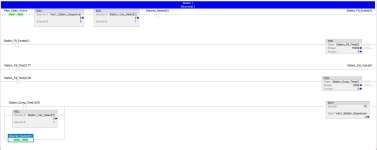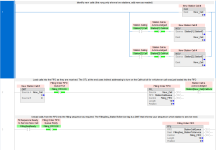Big Brunsy
Lifetime Supporting Member
I'm fairly green at PLC programming compared to everyone here. I have a firm understanding of most commonly used instructions. Everything I've learned came from reading this forum, watching youtube, and trial/error in real world.
That being said, I'm trying to hurry up and write a program for our resin distribution system that was running on an old Digi International processor that went obsolete in 2016 and has decided to finally die.
I am updating to a 1769-L33ER v32 since that's what I have sitting on the shelf.
My issue is I need whatever station calls for resin first to be the first one in the queue to get it. Then when it does its fill cycle for that station, move on to the next one weather the one it just filled is full or still needs more. Then, if it does still need more to be entered at the end of the queue again.
I've tried searching on here and have gained some knowledge, but still am stuck at this part in my program.
Any help would be greatly appreciated.
That being said, I'm trying to hurry up and write a program for our resin distribution system that was running on an old Digi International processor that went obsolete in 2016 and has decided to finally die.
I am updating to a 1769-L33ER v32 since that's what I have sitting on the shelf.
My issue is I need whatever station calls for resin first to be the first one in the queue to get it. Then when it does its fill cycle for that station, move on to the next one weather the one it just filled is full or still needs more. Then, if it does still need more to be entered at the end of the queue again.
I've tried searching on here and have gained some knowledge, but still am stuck at this part in my program.
Any help would be greatly appreciated.
Last edited:









